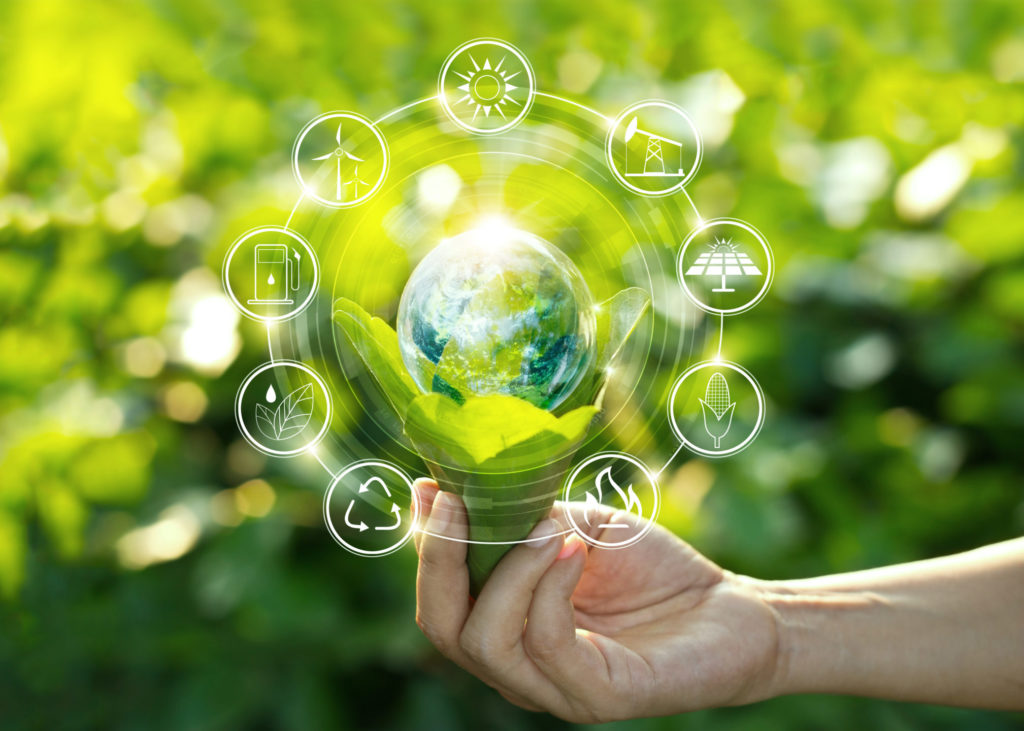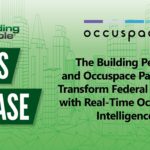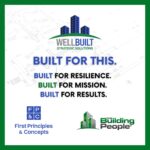
Sustainability is no longer just a marketing buzzword for companies, it’s become a fundamental aspect of responsible business practices as organizations have begun to set goals for, and commit to, a carbon-neutral future. Companies across all industries are recognizing that efficiency, sustainability, and carbon-neutral practices aren’t just good for the planet, they’re also good for the bottom line. One powerful way to embrace sustainability is by implementing a comprehensive sustainability program within your organization built around calculated carbon-zero goals. Such a program can have a profound impact, not only on an organization’s environmental footprint but also on their financial health and operational efficiency. Here are five ways that a sustainability program can save money, increase efficiency, and reduce waste for your organization:
1. Energy Efficiency Technologies
One primary aspect of a sustainability program involves installing and utilizing energy-efficient building technologies. This includes sensors, touch-free technologies, and Internet of Things (IoT) smart devices. These innovations are designed to automate and optimize resource usage, decrease energy and water consumption, and, consequently, reduce operational costs. Optimal use of building systems through smart building automation technologies is a key factor in implementing and executing a sustainability strategy that enables an organization to achieve a net-zero carbon footprint.
IoT technologies ensure that resources such as lighting, heating, and cooling are used only when needed by automating these processes. This not only saves money, but also decreases the building’s carbon footprint and enhances the overall comfort and productivity of building occupants by ensuring that building temperatures and lighting conditions are at optimal levels. Read more about and see examples of energy efficient buildings projects here.
2. Eco-Friendly Products
Another aspect of sustainability is the use of eco-friendly products within your building. From low-flow toilets to sustainable building materials, these choices can significantly reduce the environmental impact of your facility. While these products require an initial investment, the long-term benefits are substantial. Lower utility bills, reduced maintenance costs, and better efficiency can all contribute to cost savings and a reduced carbon footprint.
Besides sustainable building materials, utilizing eco-friendly cleaning and facilities maintenance supplies is a key component of a sustainability program. Harsh cleaning chemicals can have a severe impact on both the environment and building occupants. Advances in cleaning chemical technologies have enabled facilities managers to use eco-friendly cleaning supplies without jeopardizing effectiveness. Utilization of eco-friendly paper products and low-energy hand dryers also allow facilities managers to significantly reduce waste in restrooms and hand cleaning areas. To find a list of eco-friendly products and more information on eco-friendly labeling standards click here.
3. Recycling Programs
Implementing recycling programs within your building is a simple yet effective way to reduce waste and promote a culture of sustainability among occupants. Recycling not only diverts materials from landfills, but also conserves resources by reusing materials in a closed-loop system, which, in turn, can lower waste disposal costs.
Recycling programs are also an effective way to build a mindset of sustainability within the facility. The visibility of recycling bins and instructional posters act as constant reminders that sustainability is a priority within the facility. This mindset will often result in occupants not only participating in the recycling program, but also practicing sustainable office practices such as turning off lights, recycling paper, utilizing hand dryers instead of paper towels, ensuring outside doors and windows are closed, reducing water usage, and keeping thermostat temperatures at reasonably efficient levels. Read more about recycling programs including a searchable library of plans, data, and educational materials here.
4. Energy Efficiency Upgrades
While initial costs may deter some from pursuing energy efficiency upgrades, it’s essential to recognize that these investments often pay for themselves in the long run. Upgrading building infrastructure, including insulation, windows, and HVAC systems, can significantly reduce energy consumption. As a result, utility bills decrease, and the company’s carbon footprint shrinks. Over time, the return on investment becomes evident, with the savings outweighing the upfront costs. IoT controls, sensors, and smart building software used in conjunction with these energy-efficient systems ensure that they maximize efficiency.
5. Solar and Wind Energy Installations
Organizations aiming to advance sustainability are harnessing renewable energy sources such as solar and wind. Installing solar panels or wind turbines can make your building self-sustaining in terms of energy generation. Any excess energy produced can even be fed back into the grid, potentially creating an additional revenue stream. While the initial investment can be substantial, government incentives and decreasing renewable energy costs are making these solutions more accessible and financially viable. Green energy sources enable buildings to become self-sustainable and are a key to meeting carbon zero goals. Learn more about the different types of renewable energy and their benefits here.
In conclusion, a sustainability program isn’t just about saving the environment; it’s also about saving money, increasing efficiency, and meeting carbon zero goals. By implementing energy-efficient technologies, using eco-friendly products, establishing recycling programs, investing in energy efficiency upgrades, and adopting renewable energy solutions, your organization can simultaneously reduce costs and while achieving sustainability goals. Embracing sustainability isn’t solely a moral obligation; it’s also a smart business strategy that positions your company for a greener and more prosperous future, contributing to the net-zero carbon solution.







